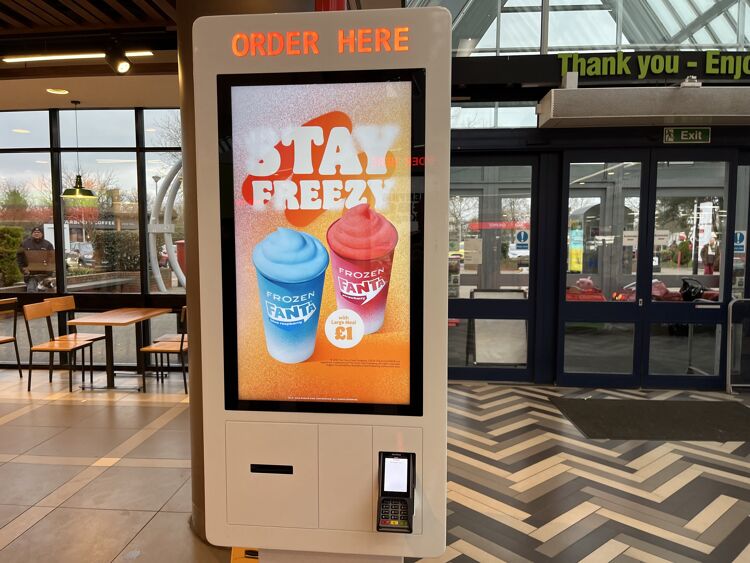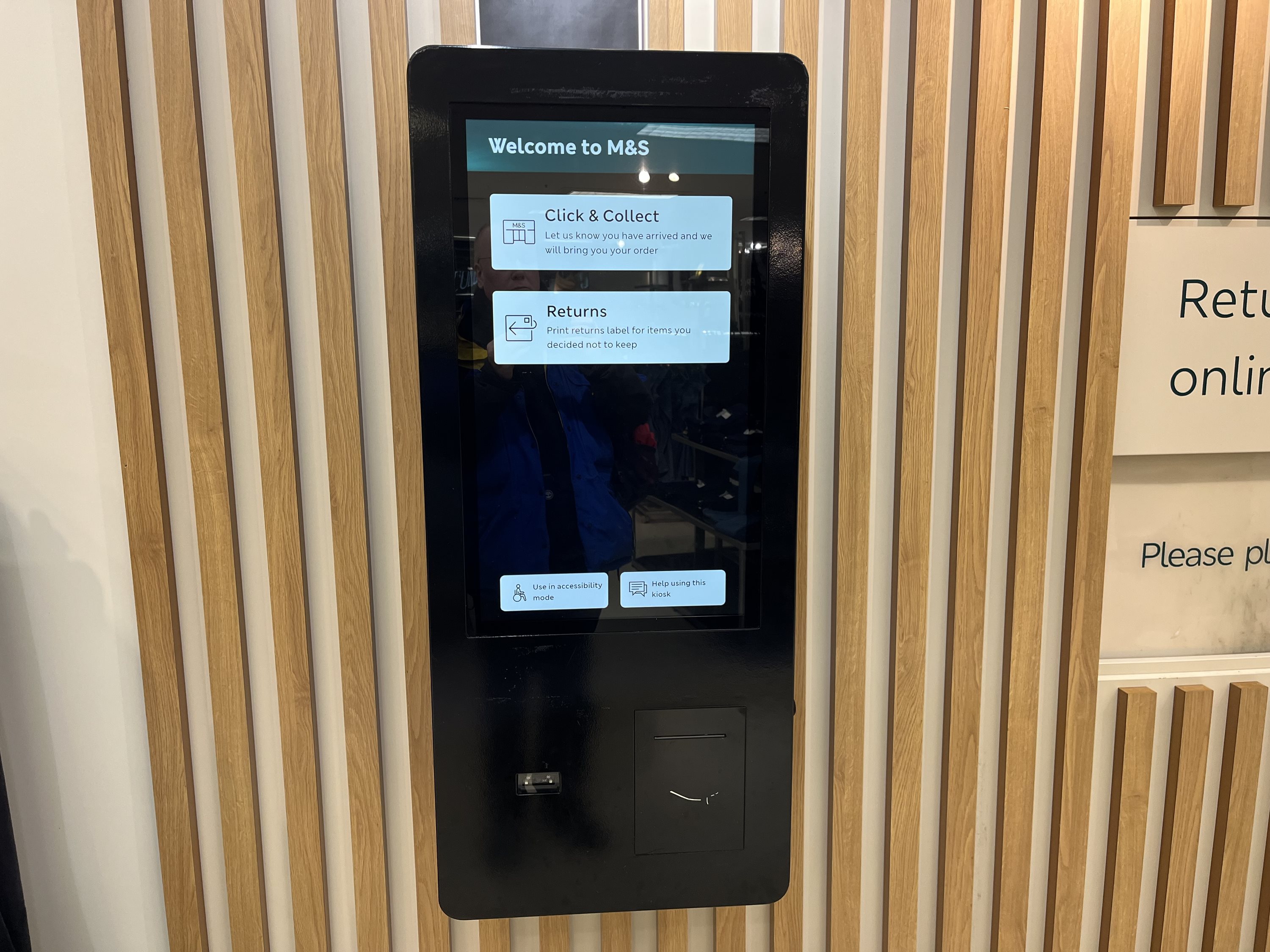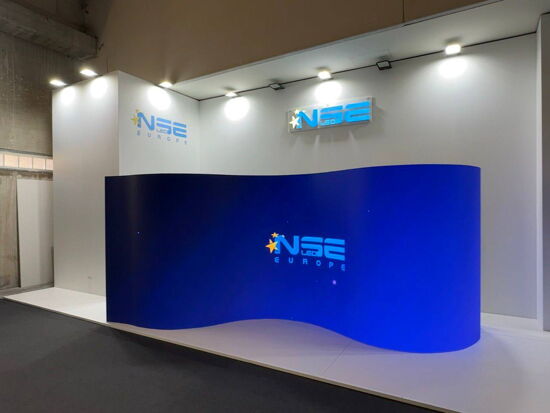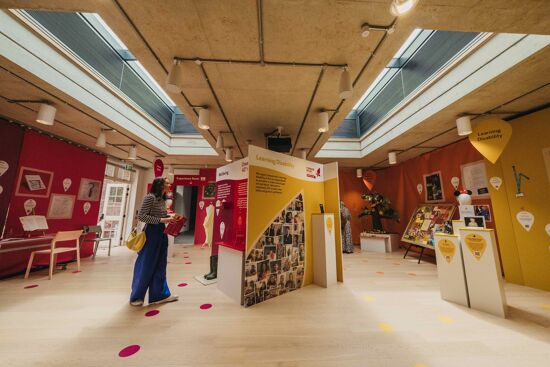What are the opportunities for large format providers regarding digital touch screens?

Digital touchscreens are becoming increasingly common, offering businesses opportunities to improve customer engagement and streamline operations. Nessan Cleary shares, while more expensive to implement than standard digital displays due to complex software and integration needs, touchscreens provide self-service options, multilingual support, and can reduce staffing costs in various settings like retail, transportation, and healthcare.
The idea of a digital screen as simply a passive display seems quite old-fashioned now that we are all carrying smartphones around with us, and have become used to running all aspects of our lives through these devices. So interacting with Digital Touch screens now seems perfectly natural in many different settings from shops and restaurants to hotels and hospitals.
However a touch screen should not be seen as an alternative to a standard digital screen - despite the similarities in the technology - or to using a printed sign. There are a number of different reasons for using a touchscreen. The obvious one is to use the interactivity to improve customer engagement, which can in turn help a business convert more enquiries into actual sales. Such screens also allow customers to explore the full range of products that a retailer might sell, without necessarily having to have all of those on display, or even in the store.
But for most businesses the real benefit of a touch screen is that they allow customers to serve themselves so that a business can cut down on the number of customer-facing staff while ensuring that customers are not left waiting to be served. There are lots of different scenarios where that might be desirable. One example might be transport hubs, making sure that travellers can access timetables without having to have staff on hand to help.
Alternatively, a standard digital screen could be used in a restaurant to show the menu to customers, but a touch screen can go a step further by allowing customers to order direct from that menu. They can be used for patients to tell a hospital department that they’ve arrived for their appointment, or for airline passengers to check in and drop off their bags.
One big advantage is that customers can be given an option to use their own language, which is particularly useful in any setting where you are likely to have a lot of tourists.
Implementation
Touch screens will cost more to implement than a standard digital screen, partly because the screens themselves are more complex but also because the software and systems integration is more complicated to set up. So you need to be clear about your objectives to ensure that a touchscreen is the best approach.
In terms of software, a static screen can be run off a simple media player and might only require a power source. However, a touch screen will require a more complex software solution, depending on the degree of interactivity and very likely a network connection as well. A simple wayfinding system, for example, might give users a limited number of choices and display pre-programmed navigation based on user selections. A hospital appointments system that allows patients to check themselves in would have to link to patient records to identify the correct patient, find their appointment and direct them to the correct waiting area.
However, a point of sale screen that takes customer orders would have to include a payment system, and would also need to be linked into the retailers fulfilment system, as well as the inventory management system to ensure that customers aren’t being charged for products that are no longer available. For this type of interaction, the level of systems integration will be the deciding factor in the cost and success of the touch screen implementation.
Apart from the software, you will still need the screen itself. The easiest approach is simply to use a secure tablet holder since most available tablets offer crisp displays with built-in networking features. There are also a number of commercially available screens that run off an Android operating system and include the content management system.
 This instore touchscreen allows customers to collect and return online purchases themselves. ©Nessan Cleary
This instore touchscreen allows customers to collect and return online purchases themselves. ©Nessan Cleary
The most widely used touch screen technology is projected capacitive, usually referred to as PCAP. Essentially this is based around a standard LCD screen, with a grid of transparent electrical conductors sandwiched between this and a cover glass top layer. When users touch the screen, the grid detects the coordinates, which can be mapped to buttons on the interface. It’s sensitive enough to detect gestures, such as scrolling, but not so sensitive as to be fooled by dust on the screen. Resolution should be around 1920 x 1080 pixels with 500 NITS or cd/m2 of brightness. Prices range from around £250 for a 10ins to £2000 for a 55ins screen for a wall mounted solution. Freestanding or totem designs are slightly more expensive.
You also need to pay particular attention to the location. It makes sense to install digital screens in high footfall areas to make the most of the investment. But if you want users to engage with an interactive display then there has to be space for people to stop without being jostled by passers by. The location will also determine the level of protection needed to deal with weather or with vandals or both. And of course, you’ll also need to factor in the power supply.
The screen will have to be at the right height for the average sized person to view and interact with, meaning that you might have to consider differences in height between adults and children. Many countries now also have legislation to ensure that disabled customers are catered for, including those in wheelchairs or with visual impairments.
It goes without saying that if the touchscreen solution includes any kind of consumables, such as a soap dispenser or a paper roll for issuing receipts, then you will also need a strategy for keeping those consumables in stock, preferably a sensor that warns when those consumables are running out. Otherwise, there is a risk of damaging a brand’s reputation, particularly if a touchscreen has been used to cut down on human staffing so that there’s no one to help.
The pandemic did highlight a disadvantage to touchscreens, because of the risk of spreading infection from a device that multiple people are going to be touching. Some got around this by including soap dispensers. But a new innovation may offer a solution for future health scares in the form of touch-less screens. These screens incorporate cameras and ultrasonic sensors to pick up movements and gestures so that there’s no need to touch the screen itself.
Discover the latest innovations in digitalsignage at European Sign Expo 2025, Europe's leading signage and visual communications exhibition taking place from 6 – 9 May at Messe Berlin, Germany. It will showcase cutting-edge products, visionary concepts, and transformative developments shaping the future of signage. Register to visit here and use promo code ESEJ502 and only pay 25 euros for your entrance ticket.
Topics
Interested in joining our community?
Enquire today about joining your local FESPA Association or FESPA Direct
Recent news
.png?width=550)
Why are FESPA events the ideal place for visionaries to meet? With Harold Klaren from EFKA
We speak to Harold Klaren, International Sales Manager at EFKA about visionaries in print. Harold shares why he believes FESPA events are the ideal place for visionareis to meet.

NSELED to showcase Innovation and transformation at European Sign Expo 2025
NSELED Europe, part of leading LED display technology provider NSE, will welcome visitors to its stand at the European Sign Expo 2025. Ahead of the event, we speak with Daniele Rocca, principal chief executive officer at NSELED Europe, about what to expect from the company as the official ‘Digital Screen Partner’ of the event.

Why the Future of Print Is Personal – and What That Means for Your Business
Minna Philipson, CMO at Gelato shares how the future of print is personal, driven by demands for tailored, localised, and on-demand products. Businesses must adapt, embracing software to streamline operations and building customer-centric brands. Personalisation is key to connection, requiring emotional storytelling and flexible operations to thrive in the evolving market.

The latest sustainable solutions in non-digital signage
While by no means a new concept in the market, sustainability is becoming an increasingly important part of daily life for sign-making businesses. Here, Rob Fletcher shares some of the non-digital materials to help companies become more planet friendly.